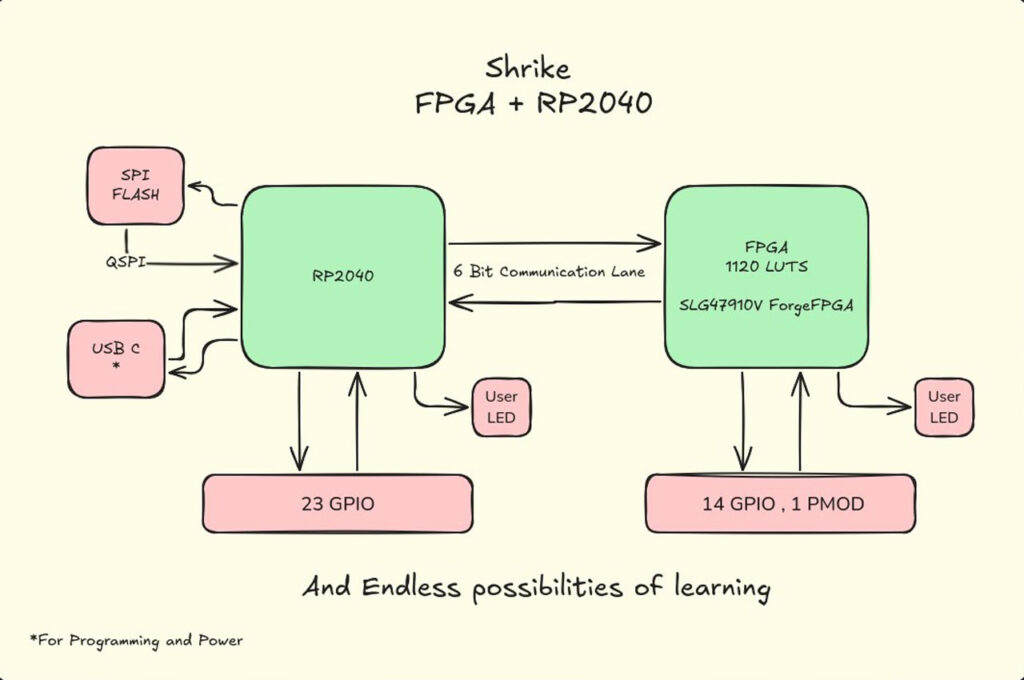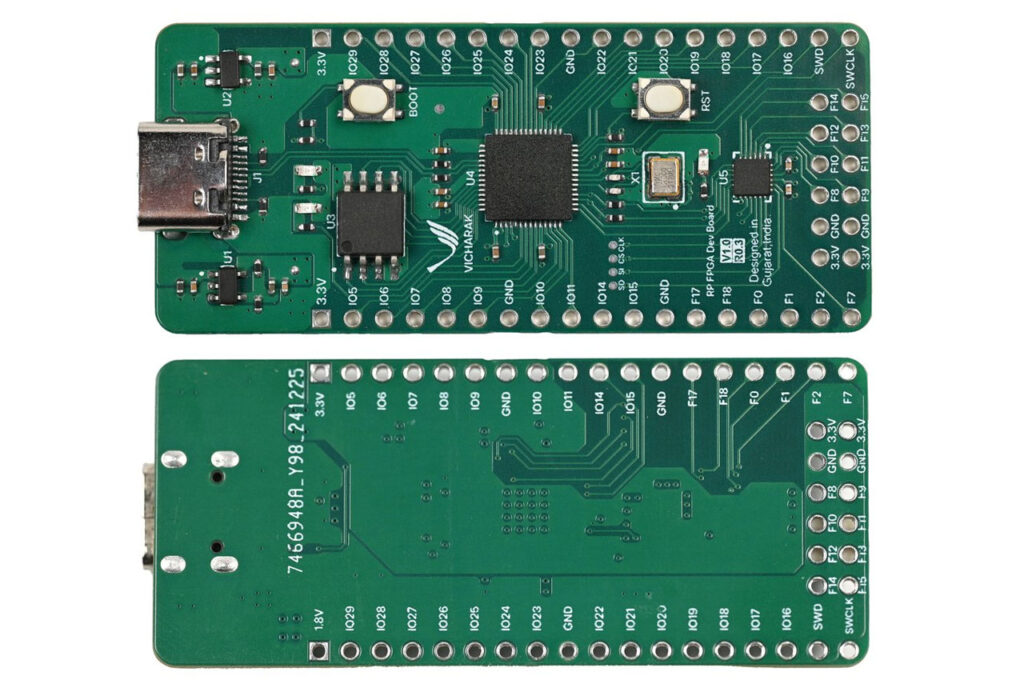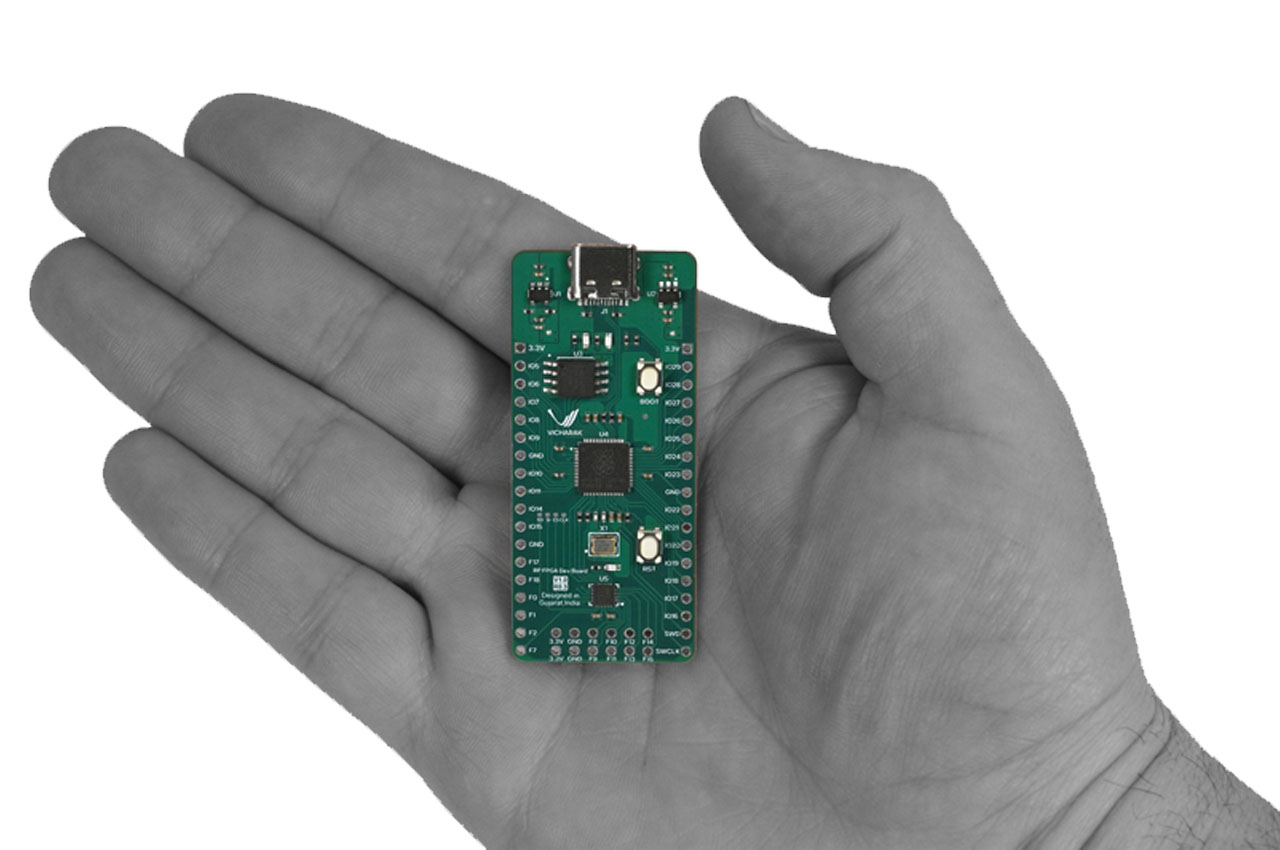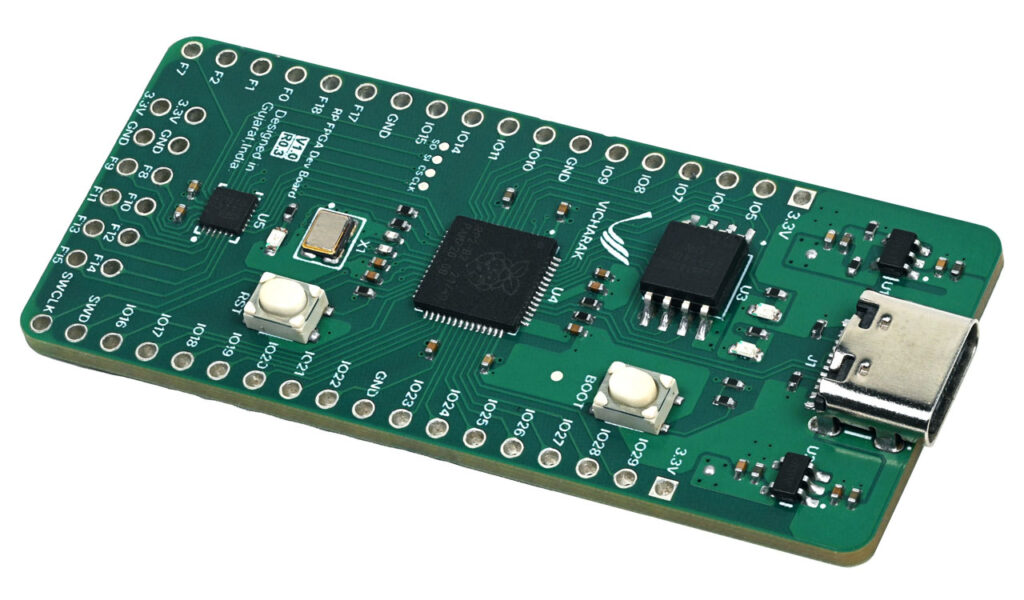Shrike is a proposed open source development board, an Indian startup Vicharak and is designed around a Raspberry Pi RP2040 microcontroller with a Renesas ForgeFPGA to form a small yet powerful embedded and hardware development platform.
Shrike is designed to increase access to FPGA-based hardware development with a low barrier to entry, with only 60 x 25 mm and 30g in weight. The RP2040 has a 6-bit high-speed bridge connecting it to the FPGA, enabling flexible communication between software (on any of the two microcontrollers) and custom logic (on any of the two FPGAs). USB Type-C has a power and programming interface that is supported.
Its base FPGA is the Renesas ForgeFPGA (SLG47910V), which has 1,120 LUTs (look-up tables) to execute user logic designs with. The RP2040 performs tasks involving more advanced functionality, such as USB connectivity, control logic or configuration management. This hybrid design allows a great deal of flexibility in implementation: you can move time-sensitive or parallel tasks to the FPGA, and leave the interface, communication or management tasks to the MCU.
Use Cases:
Shrike is compatible with a multitude of applications, which makes it well-suited to students, hobbyists, and developers who need to use it with embedded systems. It can be used in learning digital design, FPGA programming, and microcontroller integration in educational environments and can be used to teach students the interaction between software and hardware on a more fundamental level. It is also very useful in making custom communication protocols; you can create your own SPI, I2C or UART in Verilog and have complete control over timing and signal behaviour.

Beyond education, Shrike is capable of handling retro computing and custom core projects, such as building small 8-bit CPUs or CHIP-8 systems for experimenting with low-level logic design. The hybrid design also allows it to be used in creative hardware work such as USB MIDI controllers, user-designed gamepads, or hardware with security requirements. In these, the FPGA will handle real-time or low-latency processes, but the RP2040 microcontroller will handle USB communications and more abstract logic. Such flexibility makes Shrike a small and capable platform on which software and reconfigurable hardware can be experimented with and tried.
Open Source and Tooling:
Shrike is designed as an open hardware platform. Full documentation will be released after the campaign ends. The board comes with a MicroPython-based utility to program the FPGA, plus open Verilog examples (UART, I2C, even RISC-V) to get users started. It also supports Renesas-provided tools, so the community has access to vendor tooling.

Shrike is developed by Vicharak, headquartered in Surat, India. Their mission is to advance reconfigurable computing by making such systems more accessible and enabling experimentation beyond traditional processor-centric designs.
In press coverage, Shrike has been praised as a “compact, low-cost, open-source FPGA development board” by the RP2040 microcontroller, which is particularly attractive for embedded and educational use.

